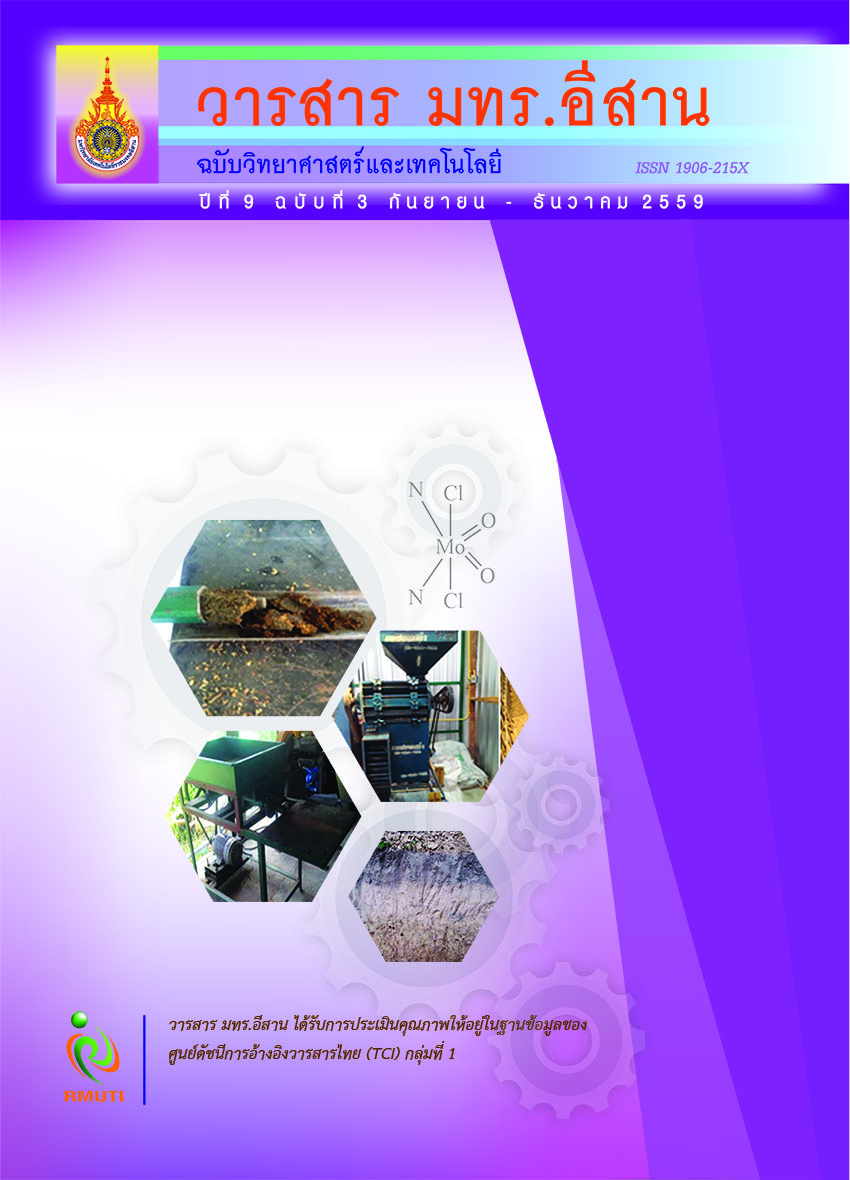การตรวจสอบคุณภาพของนํ้าดื่มบรรจุขวดที่จำหน่ายในจังหวัดฉะเชิงเทรา Monitoring Qualities of Bottled Drinking Water Sold in Chachoengsao Province
Main Article Content
Abstract
บทคัดย่อ
ในการศึกษาครั้งนี้ไดท้ ำการศึกษาถึงคุณภาพทางจุลชีววิทยา คา่ ความเปน็ กรด - ดา่ ง และลักษณะที่ปรากฎ
ของนํ้าดื่มบรรจุขวดที่จำหน่ายในจังหวัดฉะเชิงเทรา ประเทศไทย พบว่าตัวอย่างนํ้าดื่มบรรจุขวดจำนวน
33 ตัวอยา่ ง ที่บรรจุในขวดพลาสติกใสและพลาสติกขุน่ มีปริมาณแบคทีเรียกลุม่ โคลิฟอรม์ และฟคี ัลโคลิฟอรม์
น้อยกว่า 2.2 MPN ต่อมิลลิลิตร และไม่พบ Escherichia coli ในทุกตัวอย่าง ส่วนค่าความเป็นกรด - ด่าง
ของนํ้าดื่มพบว่า ร้อยละ 36.36 มีค่าความเป็นกรด - ด่างน้อยกว่า 6.5 แต่ทุกตัวอย่างที่ตรวจมีลักษณะใส
และไมมี่กลิ่น ดังนั้นน้ำดื่มที่นำมาตรวจนี้ผา่ นเกณฑต์ ามมาตรฐานน้ำดื่มในภาชนะบรรจุที่ปดิ สนิทที่กำหนด
โดยกระทรวงสาธารณสุขของประเทศไทย ด้านจุลชีววิทยาร้อยละ 100 แต่ผ่านเกณฑ์มาตรฐานด้านเคมี
(ค่าความเป็นกรด - ด่าง) ร้อยละ 63.64 เท่านั้น
Abstract
In this study, the microbiology, pH and some qualities of bottled drinking water distributed
in Chachoengsao Province, Thailand were examined. The results showed that 33 samples
of both clear and opaque bottled drinking water in terms of coliform bacteria and
fecal coliform bacteria in water samples were less than 2.2 MPN/100 mL. Escherichia coli
was not found in any samples. pH values of 36.36% samples were less than 6.5, but all
tested samples were clear and odourless. Therefore, both types of bottled drinking water
samples met the standard based on the standard for drinking water in sealed container
set by Ministry of Public Health of Thailand, in terms of microbiological standard for
100% and chemical standard (pH quality) for 63.64%.
Article Details
References
[2] FAO/WHO Expert Meeting on Bisphenol A (BPA). (2011). Reproductive and Developmental Toxicity of Bisphenol A in Mammalian Species Ottawa. Canada, 2 - 5 November 2010. World Health Organization
[3] Mokhtar, R.A., Shtewi, F.Z., Al-Zawik, A. and Karsheman, S. (2008). The Determination of Ultra-Trace Amounts of N, N-Diethylhydroxylamine Residues in Water used for High-Pressure, High-Temperature Steam Turbines. Jordan Journal of Chemistry. Vol. 3. No. 3. pp. 305-319
[4] Smith, M.K. (2010). Microbial Contamination and Removal from Drinking Water in the Terai Region of Nepal. M.S. (Chemical Engineering), Massachusetts Institute of Technology
[5] Jiaujan, P. (2009). Drinking Water in Establishment/Factory: Biological Quality of Water. Booklet of Health Science of Sukhothai Thammathirat Open University 4.
[6] Sutapreyasri, D., Tansuphasiri, U., and Kungskulniti, N. (1996). Quality of Drinking Water in Bangkok. The Mahidol University Journal. Vol. 3. No. 4. pp. 167-171
[7] Metropolitan Waterworks Authority. (1998). Are Bottled Drinking Water be Clean or safe?. Metropolitan Waterworks Authority journal. Vol. 14. No. 1.
[8] Phensri, A. and Wachirawongsakorn, P. (2012). The Microbiological Quality of Polyethylene Bottled Drinking Water Sold in Phitsanulok Municipality, Phitsanulok Province. The 4th Science Research Conference. 12-13 March 2012. Faculty of Science, Naresuan University
[9] Jariyawaranugoon, U. (2006). Report of the Inspection of Drinking Water Quality : University of the Thai Chamber of Commuerce Case Study. University of the Thai Chamber of Commerce Journal. Vol. 26. No. 2. pp. 72-83
[10] Junwattana, A. (2008). Agro-Industry Microbiology Laboratory: 10 Detection of Coliform Bacteria and E.coli. Access (28 October 2012). Available (https://www.agro.kmutnb.ac.th/e-learning/521302/10.php)
[11] Nimrat S, Banjertjaradlert H and Vuthiphandchai V. (2014). Assessment of Quality of Bottled Drinking Water Distributed in Chonburi Province. Journal of Science and Technology Mahasarakham University. Vol. 33. No. 5. pp. 454-459
[12] American Public Health Association, American Water Works Association & Water Environment Federation. (2005). Standard Methods for the Examination of Water and Wastewater. (21th ed.). Washington DC: American Public Healt
Association
[13] US. Food and Drug Administration. (1998). Bacteriological Analytical Manual (BAM). Access (23 December 2013). Available (https://www.fda.gov/Food/ScienceResearch/LaboratoryMethods/BacteriologicalAnalyticalManualBAM/
ucm064948.htm)
[14] Sirotarnarat, S. (2006). Detection for Diarrheal Bacteria and Chemical Contamination in Food. Thai Journal of Health Research. Vol. 20. No. 1. pp. 87-101
[15] Public and Consumer Affairs Advertisement Control Division, Food and Drug Administration, Ministry of Public Health. (2002). Access (23 December 2012). Available (https://www1.fda.moph.go.th)
[16] Department of Water Resource. (2010). Knowledge About Water. Access (23 January 2013). Available (www.dwr.go.th/content/content/files/001002/0012762_1.pdf)
[17] Notification of The Ministry of Public Health (No. 61) B.E. 2524 (1981). Drinking Water in Seal Container. Access (28 October 2012). Available (https://iodinethailand. fda.moph.go.th/food_54/law/announ_moph1-150.php)


